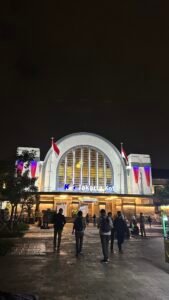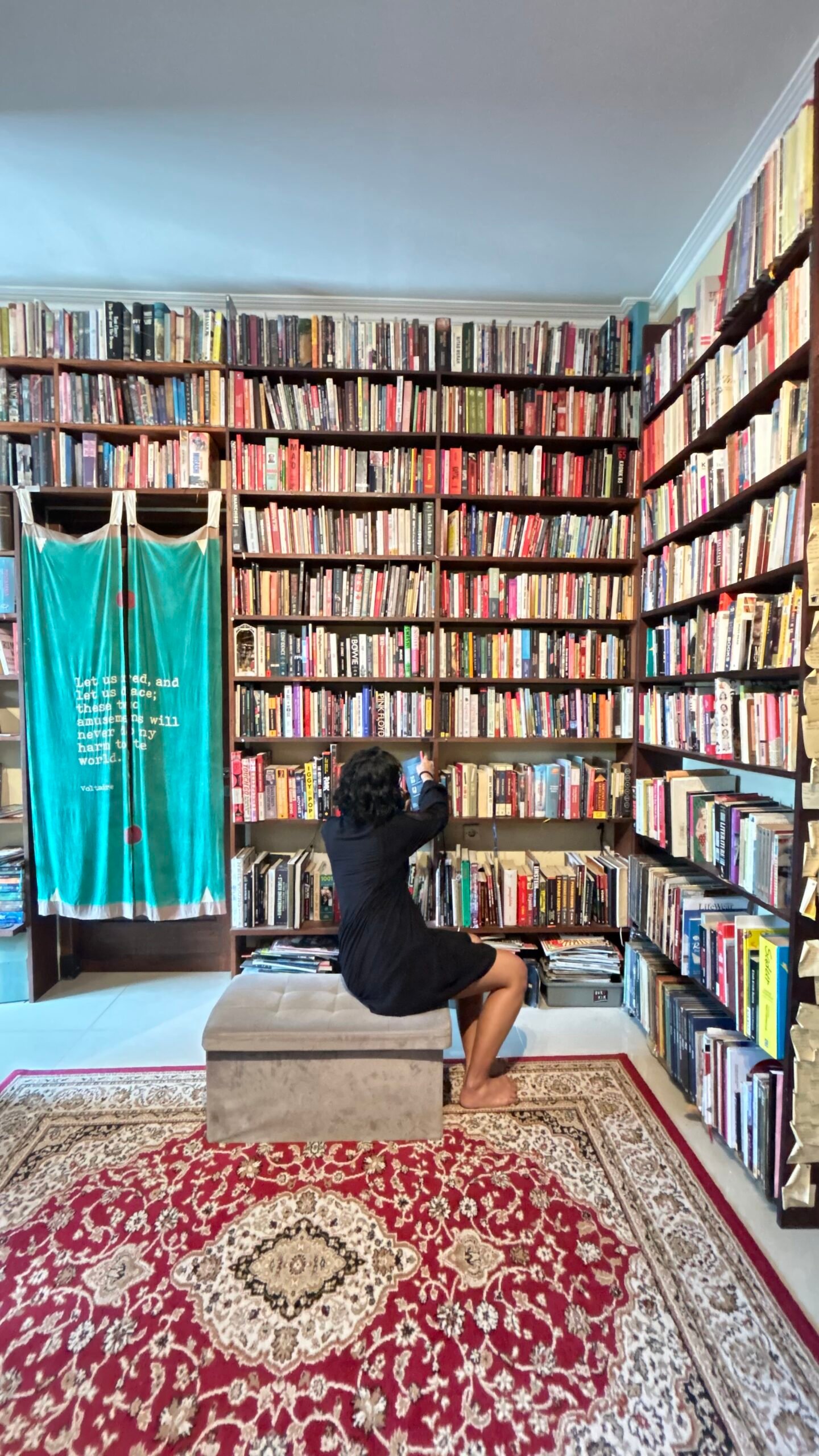*This is the second chapter of the previous article.
SEPTEMBER 2016
I tried to get close to Tari, a senior reporter who, in my opinion, is not only beautiful but also very impressive. Despite her small stature, she managed to stay on the Tanah Airku program for over two years. But I’m not the type of person who enjoys small talk and quickly bonds with others, especially with Tari’s quiet and reserved nature. It puzzled me.
“Well, it looks like one of the seats is separate. Luna, are you okay sitting by yourself?” Tari asked after exchanging plane tickets at the counter.
“Oh, it’s fine, miss. Just relax.” I replied with a smile.
Tari, Josi (our cameraman), and I headed to the plane bound for Zainuddin Abdul Madjid Airport in Central Lombok. After a two-hour journey, we arrived. Bram, a driver Tari had contacted a few days earlier, was waiting for us. Bram would accompany us for the next 15 days in Lombok.
In a minibus with a capacity of six people, we traversed the arid Central Lombok. This coverage was in East Lombok.
We arrived in East Lombok after about three hours of travel. After checking in at the hotel and showering, we went out to meet Tari’s sources. From here, Ovan, a fixer (a local informant who assists the team during coverage), joined us.
Tari’s sources were waiting at the village head’s house with various local snacks. As someone still learning, I could only watch the seniors interact with the sources. As a cameraman, Josi was very good at communication. He often helped Tari explain things to the sources.
On the first day of coverage in Perigi Village, Suela District, East Lombok Regency, I was very enthusiastic. It turned out this coverage was still in an area with signal reception. Although it was just EDGE, I could still send SMS or call my family and my partner in Jakarta.
In the first episode, Tari covered the extreme work locals do to make a living. Each episode usually requires two to three segments. The first segment featured farmers risking their lives by riding on a very fragile cable car.
Josi filmed Tari walking with her two sources. I noticed how impressive Tari was when she did a PTC (piece to camera) or spoke directly to the camera.
“Wow, Ms. Tari is really cool. One take, perfect!” I praised her during the trip.
Tari smiled. “Oh, not really. Sometimes I make mistakes and have to redo it.” I smiled upon hearing her response. It turned out Tari wasn’t arrogant, even though she was impressive.
With the sources, we walked through the hills at the foot of Mount Rinjani. How could I not be excited? Climbing Mount Rinjani was one of my goals. For now, just walking at its base made me happy.
In less than an hour, we reached the main point.
“So, this is the cable car, miss. We usually transport the harvest using this. Carrying it over the road is exhausting. You know how steep it is,” explained one of the sources, Pak Firas.
At the lowest point of this hill, there were farmers working and a wooden box, uncovered. The farmers placed their harvest into the box, and slowly, the wooden box supported by a rope moved upward towards the top of the hill. At the top, there were people ready to help. Once the box was empty, they sent it back down. This process repeated until the harvest was exhausted.
“Do the farmers also ride in the box?” Tari asked after observing the harvest process.
“Yes, sometimes, miss,” said Pak Firas.
“But it’s safe, right?” Josi interjected.
“God willing, it’s safe. We’re used to it,” Pak Firas reassured.
“Alright, let’s film you walking with Tari, carrying the rice sacks, and then both of you riding in the box,” Josi explained.
The filming process continued. Since I felt I had nothing to do, I took pictures of every moment with my DSLR camera, while constantly observing Tari’s PTCs. She also frequently did chit-chats or brief interviews with the sources.
When Tari was lifted up, I decided to try the cable car myself. A smile was constantly on my face. I love this kind of thing!!!
The first day of coverage ended smoothly.
The next day, we covered honey hunting. The scenery around us was stunning. Tobacco plants grew lushly on both sides of us. Healthy, large cows roamed, sat, and even lay in the middle of the road. The journey was quite long. After nearly two hours climbing steep hills, we arrived at a large tree with a very large beehive hanging from one of its highest branches.
Before climbing, the honey hunters promptly burned leaves to protect us from stings since bees are scared of smoke.
Then, one of the honey hunters skillfully climbed the tree. In less than 10 minutes, he reached the beehive. We below prepared by covering our bodies with sarongs, jackets, and anything else we could use to protect against stings.
Indeed, dozens of angry bees flew erratically. Thankfully, there was smoke, so no bee dared to come close.
“It’s so sad. After climbing the steep hill and reaching the beehive on such a high tree, they didn’t get much. The honey produced was very little. But there’s one more place. Hopefully, we can get more there,” Tari’s PTC smoothly continued.
From there, we proceeded to the second point. This time, the target wasn’t a tree but a cliff. On top of the cliff, which directly bordered a chasm, there was a beehive. Tari, Josi, and two honey hunters continued shooting, while I, Ovan, and other locals who accompanied us waited about 100 meters from the shooting point.
The location was very steep, right on the edge of the chasm with a path wide enough for only one person. So we had to walk in a line.
The second beehive also had less honey than the first. Oh well. We walked back to the village as it was getting late. I, Ovan, and other locals walked ahead of Tari, Josi, and the two sources as they were still shooting. While carefully navigating the steep path, Tari suddenly screamed. We in front immediately turned back.
“AAARRGGGHHH!!!” The incident happened so quickly that I didn’t even have time to scream. Tari stepped on soft ground, causing her to lose her balance. Just as she slid toward the chasm, Pak Heri quickly grabbed Tari’s left hand. As a result, both of them slid down together. Maybe if Pak Heri were younger and handsome, it would have been a romantic moment.
“TARIII???!!!” Josi’s scream broke my reverie. He strained his neck to look down where Tari had fallen. “TARIIII???!!!”
“MBAK TARIIII!!!” I also shouted in concern. Tari’s voice was completely silent.
“I can still hear her voice on the clip-on,” Josi said weakly while continuing to aim his camera down, hoping to capture Tari with the lens. “TARI! IF YOU HEAR ME, TRY TO SPEAK. I CAN STILL HEAR YOUR VOICE ON THE CLIP-ON!” Josi shouted again. The tense minutes continued.
“How is it?” I asked softly but urgently.
“There’s a voice! She’s trying to climb up,” Josi looked relieved but continued recording every moment.
Almost half an hour passed. Finally, one of Tari’s hands appeared reaching up. Pak Kas, one of the honey hunters next to Josi, pulled Tari up.
Tari smiled but couldn’t hide the tears flowing down her cheeks. While sobbing, she faced the camera and spoke.
“This path is really on the edge of the chasm. I accidentally stepped on very loose soil and fell down. Luckily, Pak Heri was quick to help. Otherwise, I don’t know what would have happened to me. It’s hard to imagine that locals have to traverse such tracks every day to make a living…”
The camera continued to record. Once Tari was stabilized, Josi draped his camera over his shoulder and patted Tari’s back.
“Are you okay? Not hurt?” Josi asked. It was clear on his face that he was very worried. Tari weakly shook her head. Josi rubbed Tari’s back to calm her. This was a truly romantic scene… Josi, with his sweet face and tall, big build, looked very dashing. Very fitting with Tari. But unfortunately, Josi was already married with one child.
After a few minutes following Tari’s fall, we continued our journey with greater caution and safely arrived in the village.
The show must go on. Upon reaching the village, Josi and Tari still had to shoot additional scenes, such as extracting honey from the hive and bottling it. By late afternoon, we finally returned to the hotel.

The first episode was completed. That morning, we checked out of the first hotel. Next, we would stay in a local resident’s house. The next destination was Maringkik Island.
At the ferry dock, several boats were parked. A dozen health center staff were already waiting for Tari. After a brief chat, the coverage began.
We had to cross in a small boat for about half an hour. Why were the health center staff involved? Because there were no medical personnel on the island. That day, the health center set up a health post for the coverage needs.
Upon arrival at Maringkik Island, rows of houses stretched across the entire island. From the dock, it was clear that the island was very densely populated.










